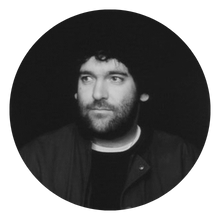.webp?width=790&height=413&name=Lewis-Hamilton-blog-featured-790x413%20(1).webp)
Image credit: Lewis Hamilton x Monster © Danny North
In the contemporary photographic world, various terms such as Editorial, Commercial, and Advertorial are discussed as a part of the industry language when describing photographic assignments. These terms can at times seem confusing to early career practitioners, student photographers developing their practise or budding assistants looking for their first “in” within the industry. I shall attempt to shed some light on the sometimes-subtle differences between these types of assignment and explain some of the considerations that influence these differences such as usage fees, the story, and the budget.
What is editorial photography?
The emphasis of an editorial project is to portray a narrative and to create a mood through a series of images. These images are often (not always in the example of fashion photography) accompanied by some text originally written by the editor (which is where the term Editorial comes from) to further create context for the series of images.
In the current photographic landscape, editorials are often low paid assignments, or even paid for by photographers as a platform to promote new styles of making work through published projects. If the project is paid for by the publication, the budget is often far less than you would expect to see on a commercial project or advertising campaign.
In terms of the creative input, photographers have far more freedom in the context of an editorial than a commercial project.
What is commercial photography?
Commercial photography, which includes advertising, sees images used to sell a product or service, and to influence a consumer audience. Any genre of photography (e.g., still-life, interiors, portraiture, landscape, even documentary) could be defined as "commercial photography" if it is used to promote a specific product or service. Commercial projects generally have much larger budgets and teams, as well as far more production to bring the project together.
Usage is brought into the fee and expected to be paid by the client. This fee is determined by where the images are to be used i.e. online, social media, billboard and/or in print and in what territories it can be used in. UK wide, Europe or worldwide are some examples that may be discussed in usage fee negotiations. In contrast, ‘usage fees’ are not usually discussed in relation to editorial projects.
In terms of the creative ideas, commercial or advertising project ideas are more heavily stipulated by the art buyer or client in most cases. The photographer’s job is to then turn that brief into a reality through their photographic expertise and creativity.
Learn more about the different types of careers available in the industry:
What is advertorial photography?
To stifle the above two relatively simple definitions, there is a third option for a type of assignment you could be commissioned to shoot as a photographer. This is one that is becoming more common as brands need to advertise more but have smaller budgets than previously available, to influence their target audience. Welcome to the advertorial.
This is an advert in a printed publication giving the reader information about a specific product in the style of an editorial or journalistic project. With this type of assignment there is more of the creative freedom pertaining to an ‘editorial’, however the products are stipulated and styled by the brand for the magazine (for example in the context of a camera advert, we might see examples of a photographer’s work alongside some narrative of why they choose a particular brand or model). Projects of this kind can often seem like ‘collaborations’ between the brand and an individual known to an intended audience (influencer).
The photographer’s remuneration will be slightly higher than those seen in editorials but not as high as for an advertising campaign. These will usually run for a set period, in a specific issue or edition of the magazine.
---
To conclude, with the changing economic landscape, brands and publications are squeezing finances, and budgets in all areas are getting smaller than seen in the past. This is not to say that there isn’t still a good level of creative opportunity available in the industry. However, make sure you as a photographer are happy with the terms and the brand values of your potential client as we move towards a more sustainable consumer landscape.
No matter what the project, there are two important points to remember. Whether you’re shooting a worldwide commercial campaign for Patagonia, or an editorial portrait story for The Travel Almanac, firstly; your portfolio is key, and secondly…. a deadline is a deadline!
Find your photography specialism with an MA in Photography, a Masters course that you can study flexibly online. The course is delivered by Falmouth University – a TEF gold-standard university – and designed to help you kickstart your career as a successful photographer.
 Anthony Prothero is a photographer and lecturer working on the BA Commercial Photography programme and BA Photography Top Up (Online) at Falmouth University.
Anthony Prothero is a photographer and lecturer working on the BA Commercial Photography programme and BA Photography Top Up (Online) at Falmouth University.
.webp)





